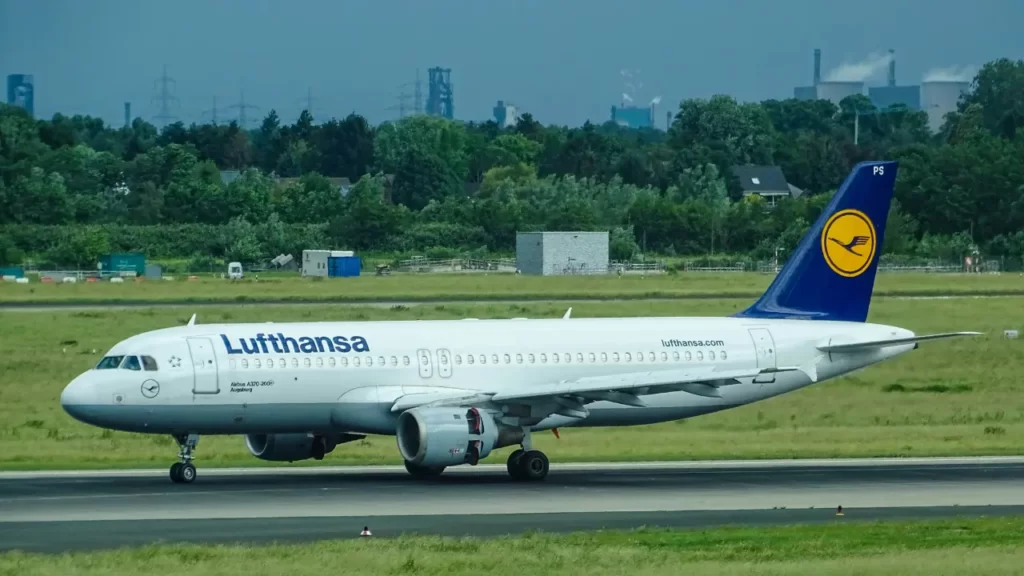
Lufthansa Overview
Lufthansa is one of the largest and most prominent airlines in the world, based in Germany. Here is an overview of Lufthansa:
Table of Contents
Founding and History
Lufthansa was founded on January 6, 1953, and commenced operations on April 1, 1955. The airline was established as the flag carrier of the Federal Republic of Germany.
Hub and Base:
Lufthansa’s primary hub is Frankfurt Airport (FRA), and it has a secondary hub at Munich Airport (MUC). These hubs play a crucial role in the airline’s extensive network.
Fleet:
Lufthansa operates a diverse fleet of aircraft, including Airbus A320 family, A330, A340, A350, and A380, as well as Boeing 747, 777, and 787. The airline continuously updates and modernizes its fleet to ensure efficiency and passenger comfort.
Alliance Membership:
Lufthansa is a founding member of the Star Alliance, one of the world’s largest airline alliances. Being part of this alliance allows Lufthansa to collaborate with other member airlines, providing passengers with a vast global network.
Network:
Lufthansa has an extensive route network that covers destinations across Europe, Asia, Africa, the Americas, and the Middle East. The airline serves both short-haul and long-haul routes, connecting major cities worldwide.
Subsidiaries:
Lufthansa Group includes several subsidiaries and affiliated airlines, such as Lufthansa Cargo, Lufthansa CityLine, Swiss International Air Lines, Austrian Airlines, Brussels Airlines, and Eurowings.
Premium Services:
Lufthansa is known for its premium services, including its First Class and Business Class offerings. The airline provides luxurious cabins, excellent in-flight entertainment, and gourmet dining for premium passengers.
Sustainability Initiatives:
Lufthansa has been actively involved in sustainability initiatives and environmental responsibility. The airline has committed to reducing its carbon footprint and investing in more fuel-efficient and environmentally friendly technologies.
Technological Innovations:
Lufthansa has been at the forefront of adopting technological innovations in the aviation industry. This includes the implementation of advanced aircraft, digital services, and other technological solutions to enhance the passenger experience.
Impact of COVID-19:
Like the entire airline industry, Lufthansa faced challenges due to the COVID-19 pandemic. The airline implemented various measures to adapt to the changing travel landscape, including adjusting schedules and implementing health and safety protocols.
Corporate History and Branding:
Lufthansa has a rich corporate history and has undergone various branding updates. The iconic crane logo has been a symbol of the airline for many years.
Please note that developments may have occurred since my last update in Janua
Lufthansa History

Lufthansa, one of the world’s largest and most well-known airlines, has a history that dates back to the post-World War II era. Here is an overview of key milestones in the history of Lufthansa:
Founding (1953-1955):
1953: Lufthansa was founded on January 6, 1953, in Cologne, West Germany. The airline was established as the successor to Deutsche Lufthansa, which was founded in 1926 but ceased operations during World War II.
1955: Lufthansa resumed operations on April 1, 1955, initially focusing on domestic flights with a fleet of Convair 340 aircraft.
Early Operations and International Expansion (1950s-1960s):
Lufthansa gradually expanded its network, introducing international routes to destinations in Europe and the Middle East.
The airline introduced jet aircraft, such as the Boeing 707, in the early 1960s, marking a significant advancement in aviation technology.
First Boeing 747 and Technological Advancements (1970s):
Lufthansa became the first European airline to operate the Boeing 747 “Jumbo Jet” in 1970. The introduction of this iconic aircraft marked a new era in long-haul air travel.
Lufthansa continued to invest in technological advancements, including the adoption of computerized reservation systems.
Expansion of Fleet and Services (1980s-1990s):
In the 1980s, Lufthansa expanded its fleet with the introduction of new aircraft models, including the Airbus A300 and A320.
The airline continued to grow its network, connecting major cities globally. Lufthansa Cargo also played a vital role in air freight transportation.
Star Alliance Formation (1997):
Lufthansa was a founding member of the Star Alliance, the world’s first and largest global airline alliance. Formed in 1997, the alliance aimed to provide passengers with a seamless global travel experience.
Fleet Modernization and Sustainability (2000s-2010s):
Lufthansa modernized its fleet with the introduction of fuel-efficient aircraft, including the Airbus A380 and Boeing 747-8.
The airline placed a strong emphasis on sustainability, investing in environmentally friendly technologies and initiatives to reduce its carbon footprint.
Eurowings and Low-Cost Operations (2010s):
Lufthansa expanded its presence in the low-cost and leisure travel market through its subsidiary Eurowings.
The Lufthansa Group also includes subsidiaries such as Swiss International Air Lines, Austrian Airlines, and Brussels Airlines.
Impact of COVID-19 and Restructuring (2020s):
The COVID-19 pandemic significantly impacted the aviation industry, leading Lufthansa to implement various measures, including fleet adjustments, cost-cutting initiatives, and restructuring efforts.
